Small Skullcap, Dwarf Skullcap, Little Skullcap - Scutellaria parvula
|
Scutellaria parvula - Small Skullcap, Dwarf Skullcap, Little Skullcap. Scutellaria is a large genus, with over 300 species recognized worldwide. There are about 45 species of Scutellaria found in United States, over 40 of which are native. At least one Scutellaria species is found in every state except Hawaii. Scutellaria parvula is found throughout the eastern half of the United States except for New Hampshire and Rhode Island (LBJ Wildflower Center shows it in those two states, but several other reliable sources indicate it is not found there. It is also found in most of the eastern Canadian provinces. Small Skullcap is found in areas of shallow soil in cedar glades, prairies, and woods.
There are three commonly accepted varieties of Scutellaria parvula which are distinguished by the type and location of hairs on the plant.
Found in:
AL, AR, AZ, CT, DC, DE, FL, GA, IA, IL, IN, KS, KY, LA, MA, MD, ME, MI, MN, MO, MS, NC, NE, NJ, NY, OH, OK, PA, SC, TN, TX, VA, VT, WI, WV | 
Distribution of Scutellaria parvula in the United States and Canada:
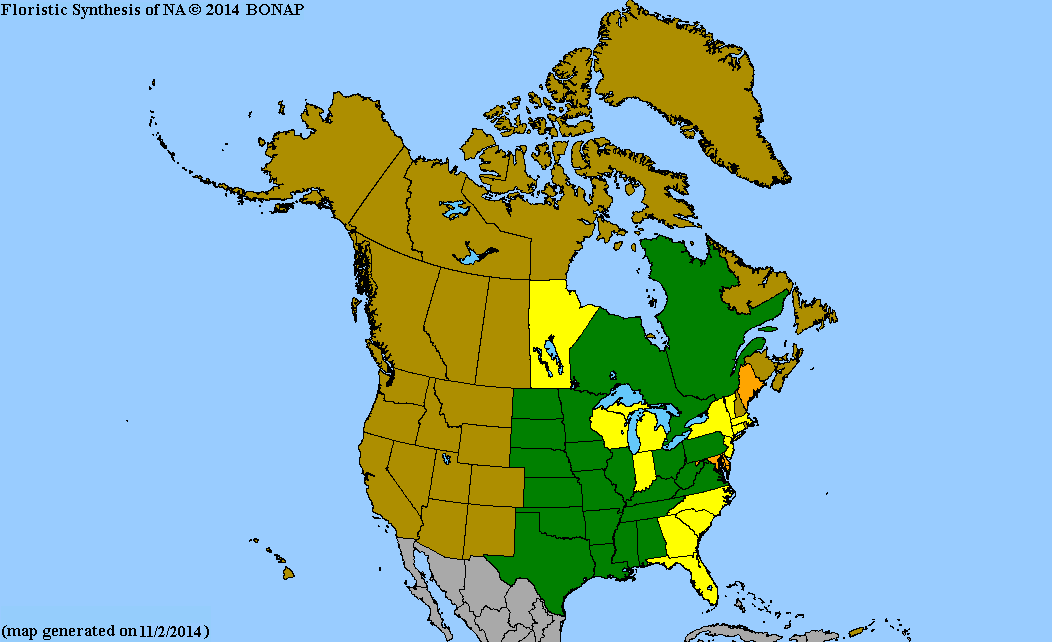
Map courtesy of The Biota of North America Program.
Map color key
Search Our Database: Enter any portion of the Scientific, Common Name, or both.
Do a general Google search of the entire site:
#ad
 Follow USWildflowers on Twitter
#ad
| | Site: Couchville Cedar Glade, Davidson County, TN Date: 2017-May-11 | Photographer: Gerald C. Williamson
Nikon D7000
Tamron SP 90MM f/2.8 AF Macro | | The flowers of Small Skullcap are blue to violet, with dark spots on the lower lip. They are in the leaf axils in the upper third of the plant. | | 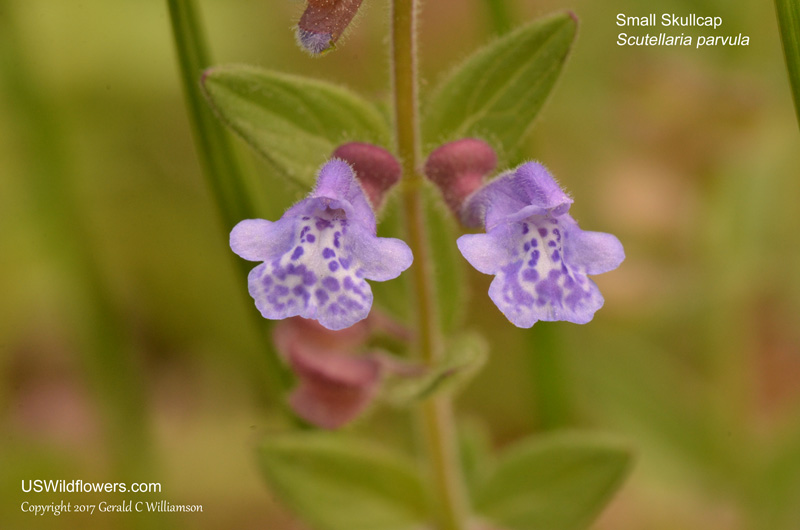
| | Site: Couchville Cedar Glade State Natural Area in Davidson County, TN Date: 2017-May-11 | Photographer: Gerald C Williamson
Nikon D7000 | | The calyx with the distinctive "skullcap" ridge is usually reddish. In this specimen the calyx is covered with glandular hairs, eliminating var. missouriensis, which has only eglandular hairs on the calyx. The hairs on the corolla tube are without glands (eglandular.) | | Click on the photo for a larger image
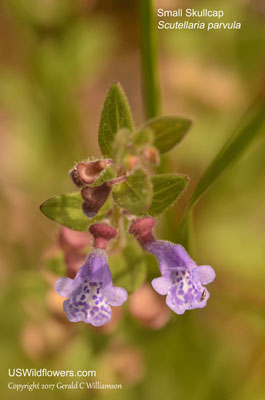
| | Site: Couchville Cedar Glade State Natural Area in Davidson County, TN Date: 2017-May-11 | Photographer: Gerald C Williamson
Nikon D7000 | | While the flowers are quite attractive, it's easy to overlook Scutellaria parvula due to its diminutive size - the flowers are about 1/4 inch long. | | Click on the photo for a larger image
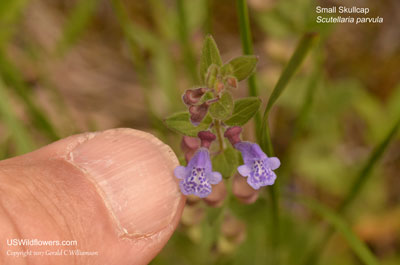
| | Site: Couchville Cedar Glade State Natural Area in Davidson County, TN Date: 2017-May-11 | Photographer: Gerald C Williamson
Nikon D7000 | | Scutellaria parvula is quite short, sometimes only 3" high, but may grow up to 9" tall. The leaves are opposite, sessile, and less than an inch long. | | Click on the photo for a larger image
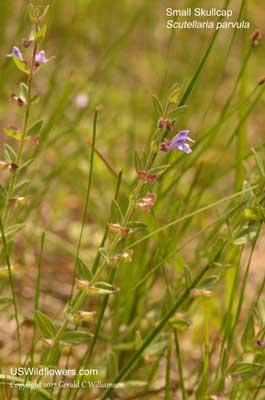
| | Site: Couchville Cedar Glade State Natural Area in Davidson County, TN Date: 2017-May-11 | Photographer: Gerald C Williamson
Nikon D7000 | | The veining and hair type are the distinguishing characteristics between vars. australis and parvula. The lateral veins of var. australis connect with each other to form a continuous vein just inside the leaf margin, and the leaf hairs on that variety are only glandular. This plant does not have the diagnostic vein, and their are both glandular and eglandular hairs on these leaves, so this is Scutellaria parvula var. parvula. It should be noted Alan S. Weakley treats these as two separate species (Scutellaria parvula and Scutellaria australis) in his Flora of the Southern and Mid-Atlantic States. | | Click on the photo for a larger image
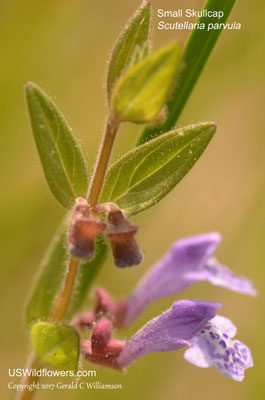
|
References used for identification and information:
|
|
| |
| #ad
|
|







